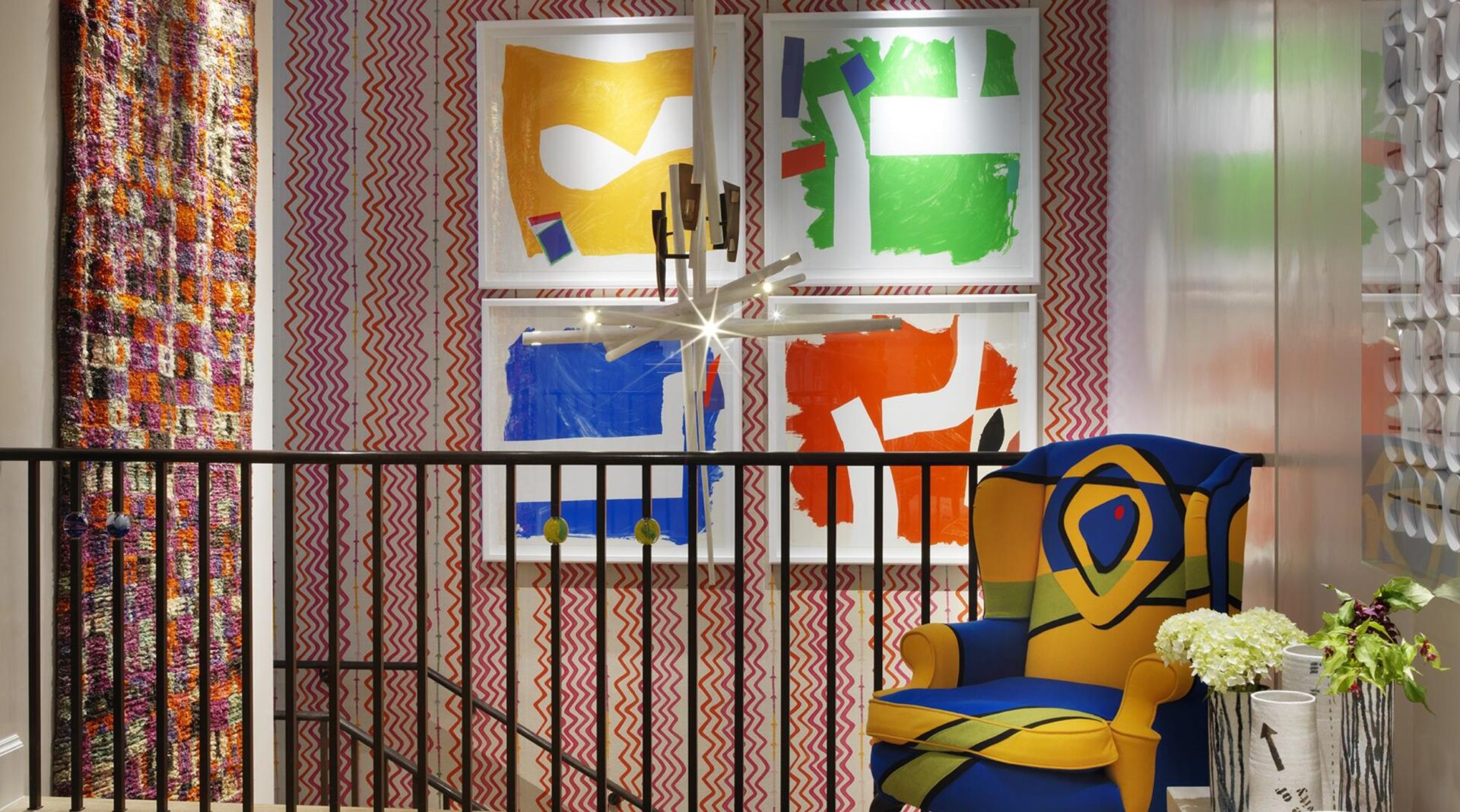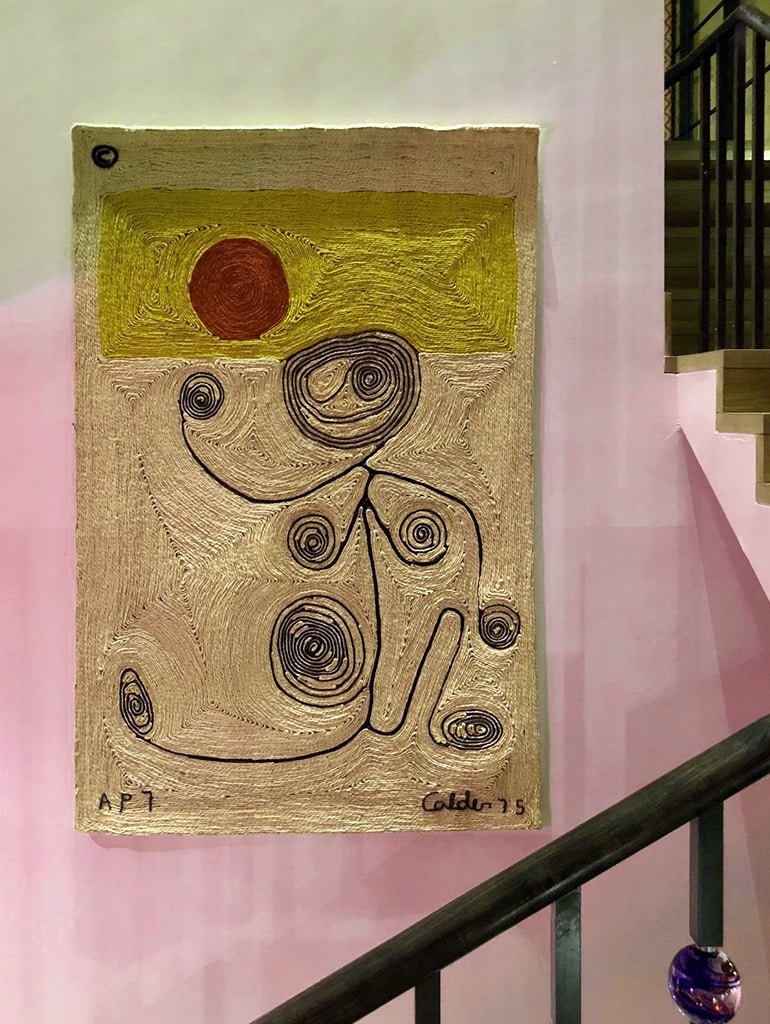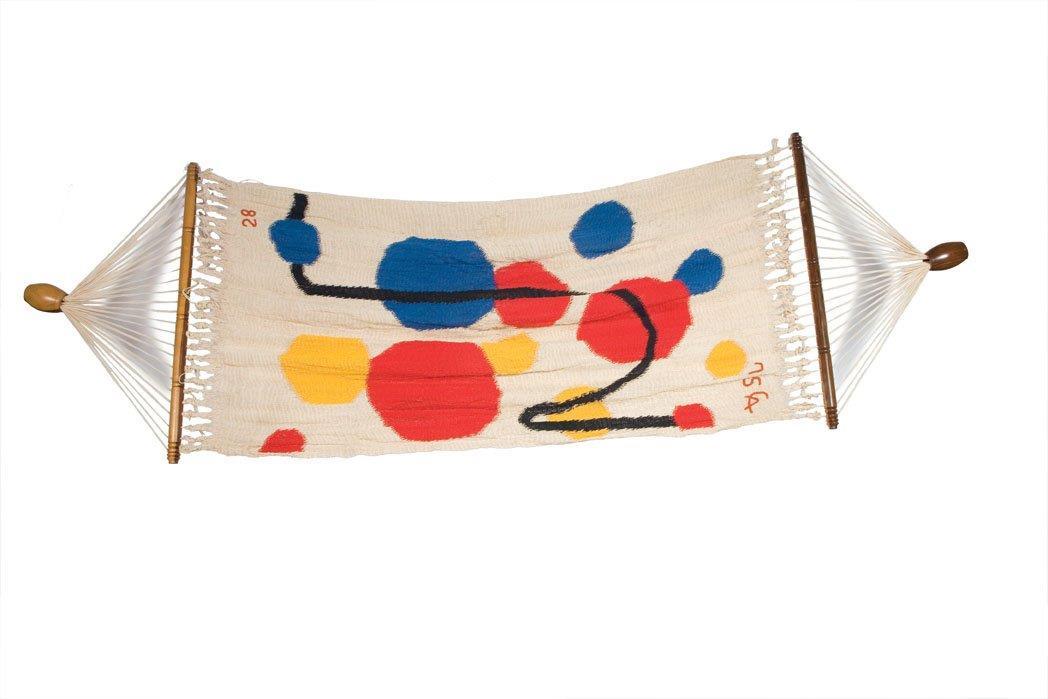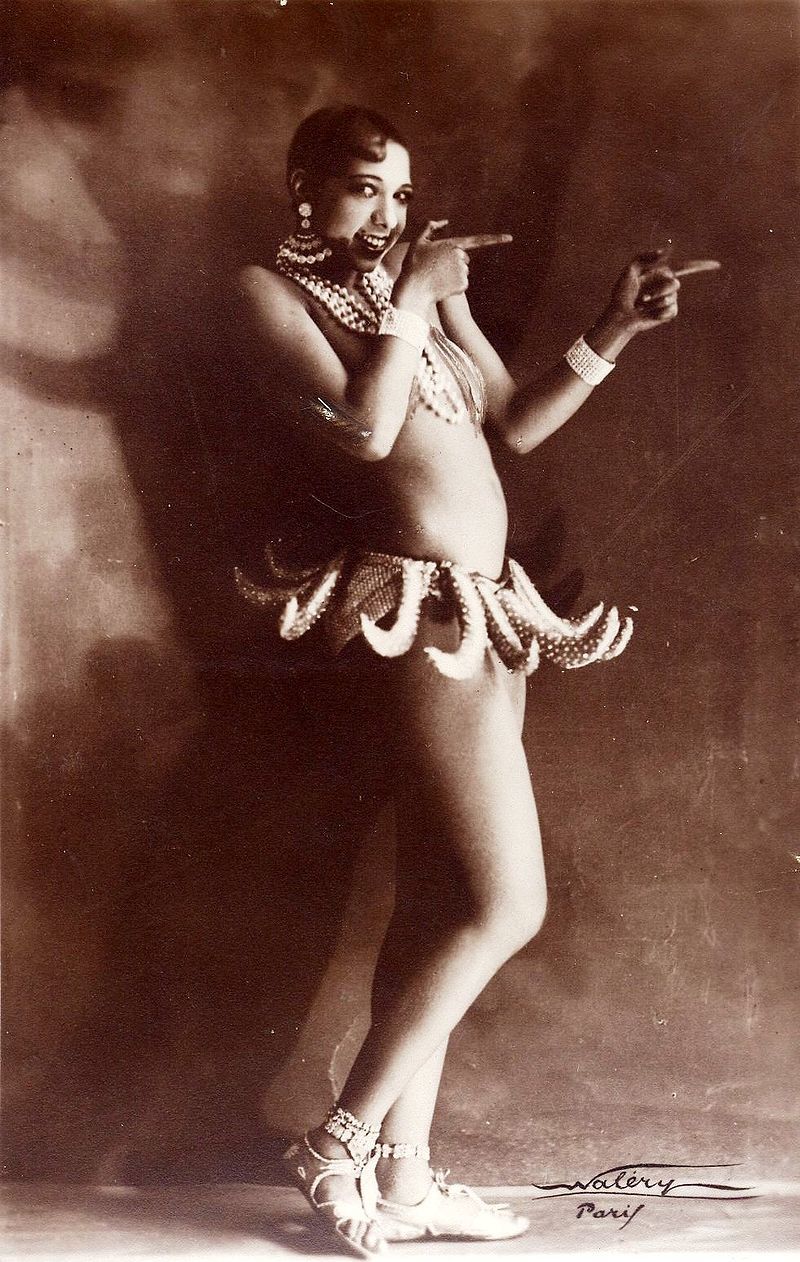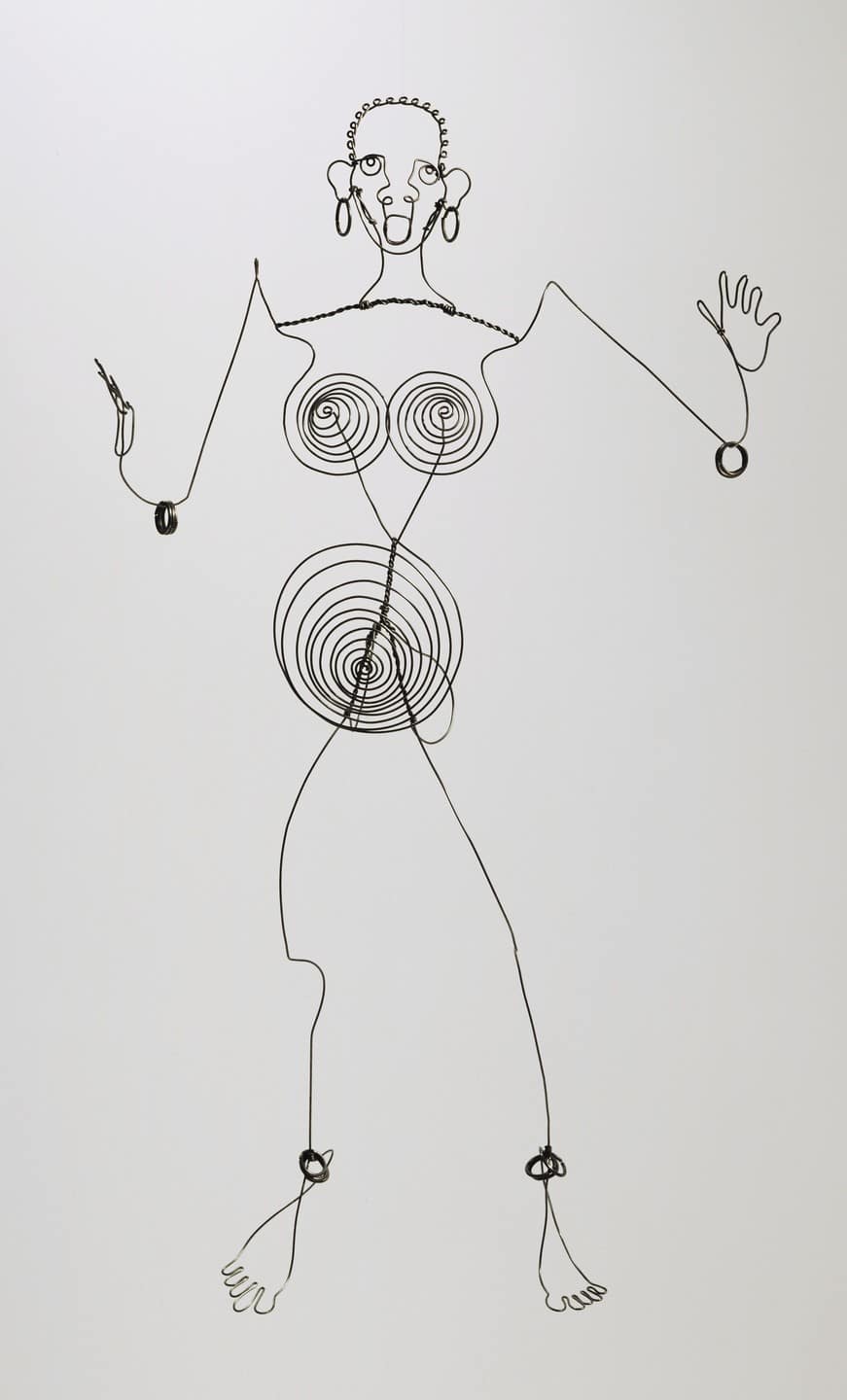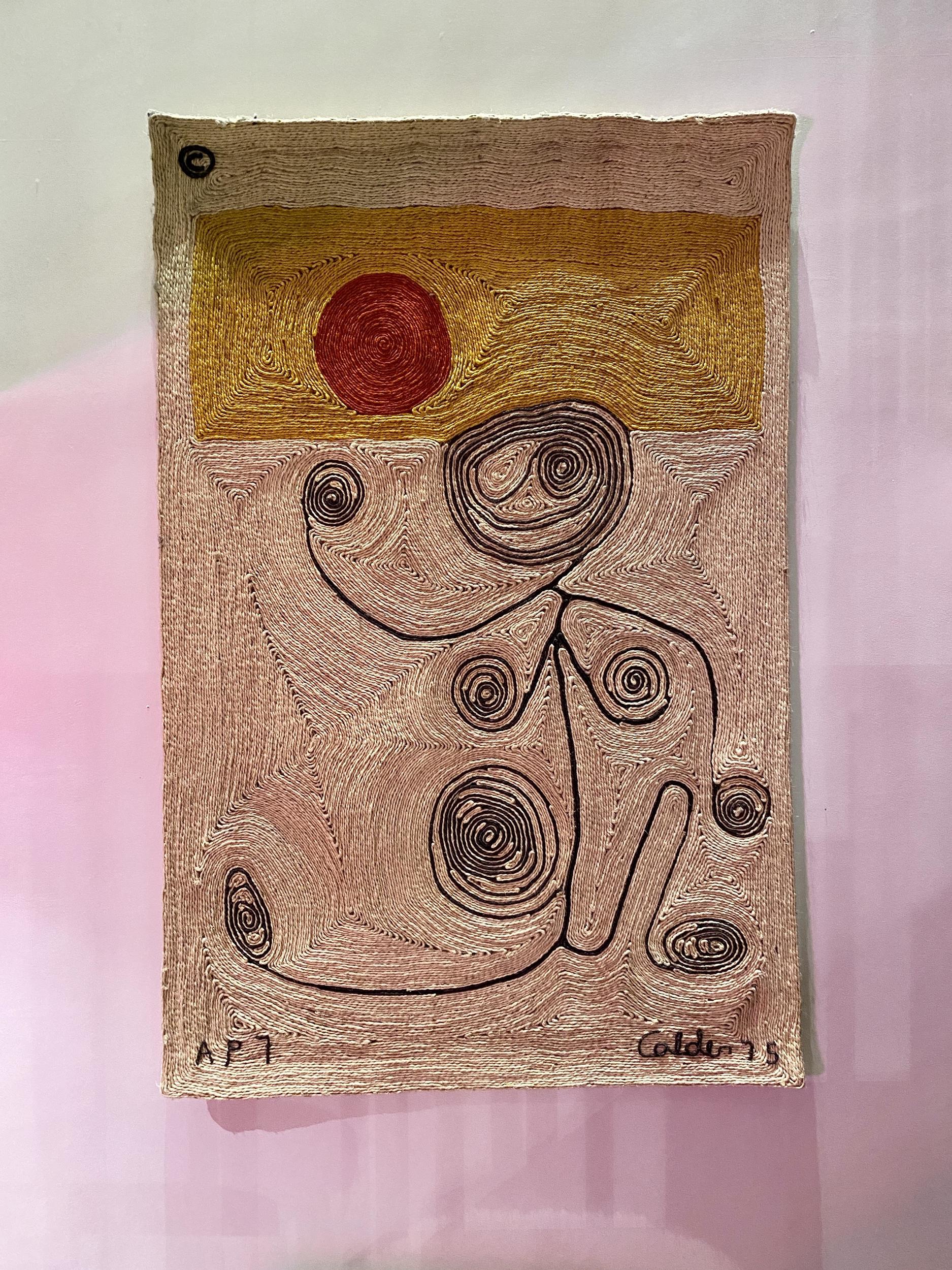Whilst our hotels have been in hibernation, one silver lining is that I have been able to enjoy their eclectic mix of artworks. Each piece is one that I personally chose and they all have their own individual story.
When I first saw a Calder tapestry presented as a ‘soft sculpture’, I was drawn to the distinctive colour palette and its hand-crafted construction. I was buying art for Ham Yard Hotel and could picture it displayed on a large three storey wall of the main staircase leading down to the Spa, Dive Bar, Theatre and The Croc Bowling Alley. I envisioned it acting almost as a gallery. Then I discovered the remarkable story behind this tapestry…
In 1972, just two days before Christmas, an earthquake in Nicaragua killed 5,000 people and left 250,000 destitute. It was Kitty Meyer, a Manhattan socialite, that initiated a huge visual arts project to help fund the rebuilding of the towns and communities.
The ambitious Kitty Meyer was a Polish Jew who escaped World War II by fleeing to Nicaragua with her family. She grew up in Managua and moved to New York fifteen years later. Calder was one of five artists to respond to her call for action. Kitty visited him in his workshop at Indre-et-Loire in central France, bringing a gift of a Masaya hammock. The craftsmanship of the hammock was such an inspiration to Calder that he commissioned a hundred local weavers in Nicaragua to make new ones and to create wall hangings inspired by his own designs.
The weavers worked with natural braided sisal, a fibre made from native agave plants. The pieces were braided rather than woven. This technique captures the subject that I discovered to be the wonderful Josephine Baker, iconic entertainer of the Jazz era, famous for her risqué performances.
You can see how Calder’s 3D wire model of Josephine Baker has been translated on to his 2D tapestry design and then brought to life by the braiding.
The tapestry in Ham Yard Hotel is one of the fourteen Calder designs that the local artisans translated into a series of limited edition tapestries. It was created a year before he died.
What I love is that Calder’s designs were followed, but the artisans had freedom to incorporate their own weaving styles and textures, making the finished works a true collaboration. It is how I like to collaborate with talented the talented artisans and makers I work with today.
In the spirit of Meyer’s altruistic vision, each of the designs was funded by paying workers four times their usual rate.
The tapestry is more than just beautiful. It represents a marriage of ideas and cultures; Calder’s bold colours and organic shapes and traditional Central American weaving techniques and materials. The project captivated the whole area, with hundreds of local weavers and villagers involved.
Kitty Meyer’s initiative and Alexander Calder’s artistry brought work and money to the region, and also promoted Guatemalan materials and craftsmanship on a global scale. This is an example of an incredible collaboration between a renowned artist and a community trying to rebuild stability in the face of a natural disaster.
We hope you will visit Ham Yard Hotel upon its re-opening to see this wonderful artwork for yourself, or if you are in New York, there is an exhibition at MoMA: Alexander Calder – Modern from the Start, on display until April 7th. I have always admired Calder’s inventiveness, embracing numerous techniques to result in playful works in wire, wood figures, jewellery, mobiles and monumental abstract sculptures.
I admire and aspire his commitment to create something every day.

